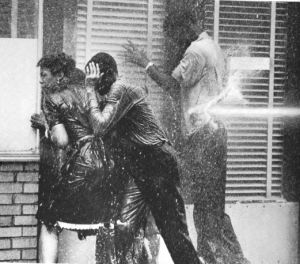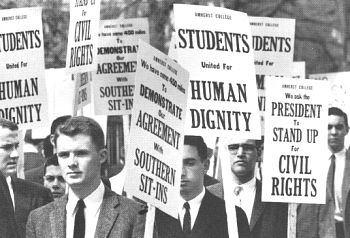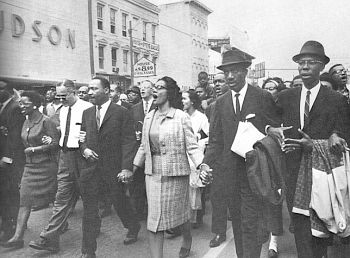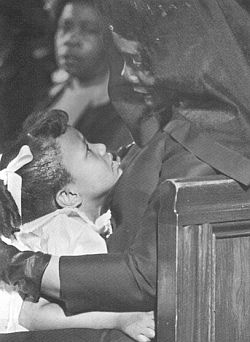A Trip Through the Sixties – The Civil Rights Movement


The Civil Rights Movement
Freedom is never voluntarily given by the oppressor; it must be demanded by the oppressed.
– Martin Luther King, Jr.

Black protesters getting the
high pressure hose in Birmingham, Alabama 1963
For the 15 percent of Americans who were black, living in an American version of Apartheid meant being treated as an inferior species of humanity. Despite the prosperous economic times, black people were being denied the same economic opportunities that whites had. Add to that descrimination in education, housing, and social inequality it’s no wonder tempers were beginning to boil. Civil Rights Acts were passed in 1960, 1964, 1965, and 1968, but blacks were still along way from achieving any sort of equality. In August 1963 200,000 people marched to Washington D.C. demanding Civil Rights. Rev. Martin Luther King, Jr. addressed the crowd with his I have a dream… speech, where he saw an equal and united America.

White Students march for Civil
Rights in Washington D.C. 1960
With new integration laws behind them, blacks sought admission to the same schools as whites. Many white southerners considered segregation their right and refused to admit black students to their schools. The prejudiced southern whites turned to violence, and with the help of the KKK threatened and intimidated blacks. This escalated and in 1964, three civil rights workers, one black and two white were murdered in Mississippi by members of the KKK.
It is purposeless to tell Negroes they should not be enraged when they should be. Indeed, they will be mentally healthier if they do not suppress rage, but vent it constructively and use its energy peacefully but forcefully to cripple the operations of an oppressive society. Civil disobedience can utilize the militance wasted in riots to seize clothes or groceries many do not even want. – Martin Luther King, Jr.

Martin Luther King Jr. and wife
Coretta lead march into Montgomery, Alabama 1965
The Rev. King and his followers used tactics of non-violence in response to the white violence around them. These tactics included speeches, sit-ins, marches, and confronting those who would harm them, face to face. These methods were pioneered by Mahatma Gandhi, with great success in the quest to oust the imperialistic English from India. King’s use of non-violence to achieve socialgoals in the face of hostility set a precedent for future American protest movements.
Martin Luther King Jr. was assassinated on April 4, 1968 in Memphis, Tenneessee.
Darkness cannot drive out darkness;
only light can do that.
Hate cannot drive out hate;
only love can do that.
– Martin Luther King, Jr.

Coretta King and daughter at MLK’s funeral
But for many Americans, non-violence was not an option, not when you’re ordered to kill.
More about Civil Rights
Links
Life Magazine’s portrait of Dr. Martin Luther King Jr.

Click on the eye to continue the Trip
Posted by: skip
Views: 169058
Topic:1
